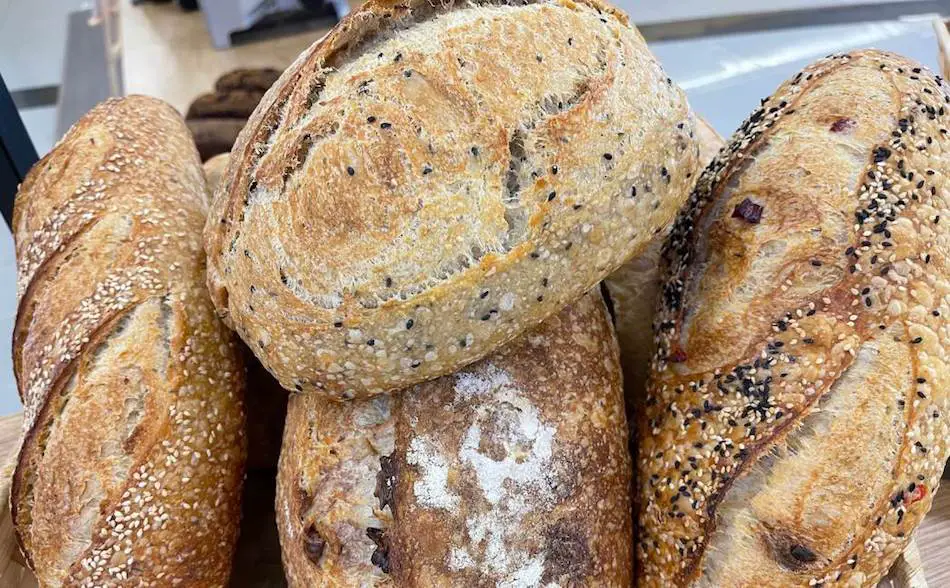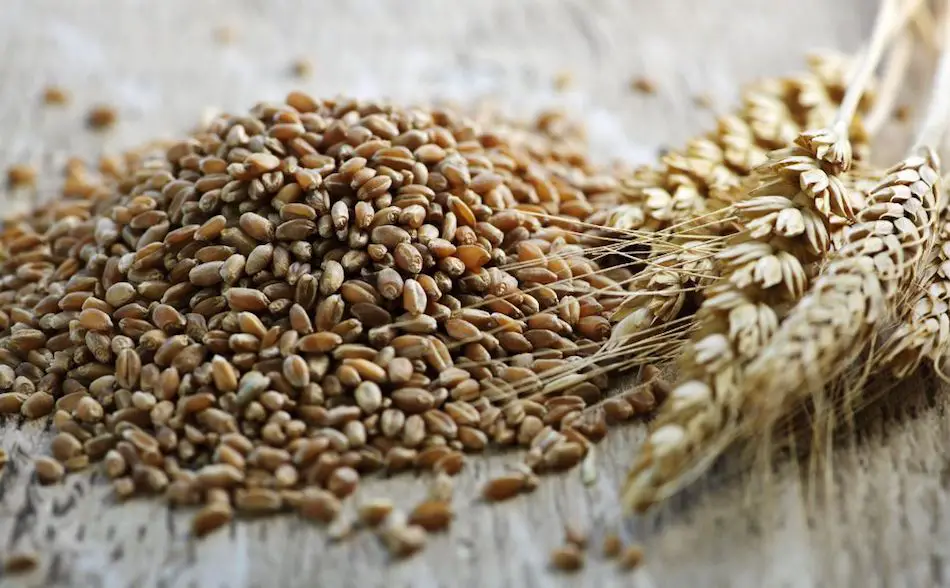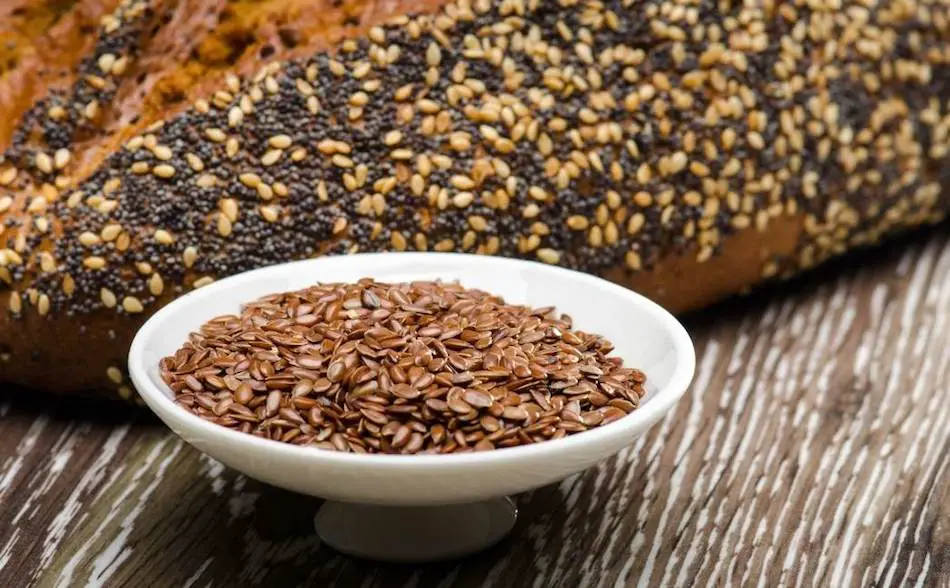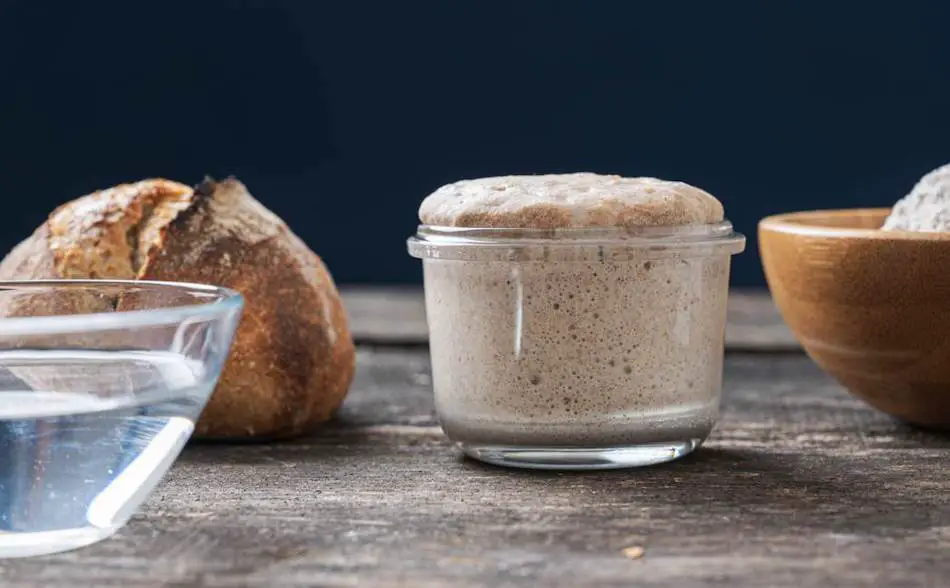
Sourdough baking is a whole different level of artistry. Incorporating grains into your sourdough can take your bread to another level by adding depth, texture, and flavor like you wouldn’t believe. In this article, we will examine the different types of grains that can be used in sourdough, the impact of grains on the flavor and texture of sourdough bread, tips for experimenting with grains, and the nutritional benefits of adding grains to sourdough.
Adding grains to sourdough is a common technique used by bakers to enhance the flavor and texture of sourdough bread. Grains can be added in various forms including whole grains, flours and meals, and the use of different grains allows for experimentation with flavors, textures, and nutritional benefits. When incorporating grains, it is important to consider factors such as the type of grain, grind size, amount used, and storage and preparation methods. The addition of grains can also increase the fiber and nutrient content of the bread.
Why Add Grains to Sourdough?
First and foremost, you need to understand the different types of grains available to you. We’re talking about wheat, rye, barley, oats, corn, and more. Each of these grains will impact the flavor and texture of your sourdough in its own unique way, so it’s important to experiment and find what works best for you.
When it comes to incorporating the grains, it’s all about balance. You don’t want to add too much and end up with a dense and heavy loaf, but you also don’t want to add too little and not see any impact on the final product. It’s all about finding that sweet spot.
One tip I’ll give you is to make sure you’re using whole grains, rather than processed white flour. Whole grains will give you a more robust flavor and a higher fiber, protein, and nutrient content. And trust me, you’ll taste the difference.
So get creative, play around with different types of grains, and find that perfect balance. With a little bit of trial and error, you’ll be making the most delicious sourdough bread you’ve ever had.
The Impact of Grains on the Flavor and Texture of Sourdough Bread
Different grains will impact the flavor of the bread in their own unique way. For example, adding rye will give you a slightly nutty, earthy flavor, while adding oats will give you a more sweet and toasty taste.
Grains can also help to create a more complex crumb structure, making your sourdough bread more interesting to eat. Whether you’re using a mixture of grains or sticking to just one type, the right combination will result in a bread with a perfect balance of chewiness and tenderness.

Common Grains to Add to Sourdough
Adding different types of flours and grains to sourdough can enhance its flavor and texture. Some of the most common grains used in sourdough baking include Rye Flour, Whole Wheat Flour, Oat Flour, Barley Flour, Cornmeal, Rice Flour, Buckwheat Flour, Millet Flour, and Quinoa Flour.
Rye Flour adds tang and depth to the flavor, making it a popular choice for baking rye bread, dark bread, and sourdough.
Whole Wheat Flour adds a nutty flavor and heavier texture, making it ideal for baking whole wheat bread, multi-grain bread, and other baked goods.
Oat Flour adds a slightly sweet flavor and tender crumb, making it ideal for baking oat bread, sweet bread, and rolls.
Barley Flour adds a mild flavor and chewy texture, making it a popular choice for baking barley bread, crusty bread, and pizza crust.
Cornmeal adds crunch and a slightly sweet flavor, making it ideal for baking cornbread, muffins, and crackers.
Rice Flour adds a light texture and slightly sweet flavor, making it a popular choice for baking rice bread and gluten-free bread.
Buckwheat Flour adds a robust flavor and dense texture, making it ideal for baking buckwheat bread, flatbread, and pancakes.
Millet Flour adds a slightly sweet flavor and tender crumb, making it ideal for baking millet bread, crackers, and other baked goods.
Quinoa Flour adds a nutty flavor and crunchy texture, making it ideal for baking quinoa bread, gluten-free bread, and crackers.
| Grain | Characteristics | Uses |
|---|---|---|
| Rye Flour | Adds tang and depth to the flavor | Rye bread, dark bread, and sourdough |
| Whole Wheat Flour | Adds a nutty flavor and heavier texture | Whole wheat bread, multi-grain bread |
| Oat Flour | Adds a slightly sweet flavor and tender crumb | Oat bread, sweet bread, and rolls |
| Barley Flour | Adds a mild flavor and chewy texture | Barley bread, crusty bread, and pizza crust |
| Cornmeal | Adds crunch and a slightly sweet flavor | Cornbread, muffins, and crackers |
| Rice Flour | Adds a light texture and slightly sweet flavor | Rice bread, gluten-free bread |
| Buckwheat Flour | Adds a robust flavor and dense texture | Buckwheat bread, flatbread, and pancakes |
| Millet Flour | Adds a slightly sweet flavor and tender crumb | Millet bread, crackers, and baked goods |
| Quinoa Flour | Adds a nutty flavor and crunchy texture | Quinoa bread, gluten-free bread, and crackers |
Common Seeds to Add to Sourdough
Seeds can be added to sourdough to enhance the flavor and texture of the bread. They can also add a unique crunch, nuttiness, and richness to the loaf. Adding seeds to sourdough can also provide a healthy source of essential fatty acids, fiber, vitamins, and minerals. Some seeds, like flaxseeds or chia seeds, can also act as natural binders, helping to hold the dough together. The type of seed used and the quantity added will impact the final result, so experimenting with different types of seeds can lead to new and exciting sourdough creations.
Flaxseeds
Flaxseeds are a popular addition to sourdough bread due to their high Omega-3 fatty acid content and nutty flavor. These seeds are often ground into a meal before being added to the dough, as this helps to release their full flavor and nutritional benefits.
When incorporated into sourdough, flaxseeds add a crunchy texture and a nutty flavor to the bread. Additionally, the Omega-3 fatty acids in flaxseeds are important for maintaining heart health and reducing inflammation.
It’s important to note that while flaxseeds are a nutritious addition to sourdough, they can also lead to a denser and heavier loaf if added in too large of an amount. It’s recommended to start with a small amount of flaxseeds and gradually increase to taste.

Sunflower Seeds
Sunflower seeds are a popular addition to sourdough bread due to their nutty flavor and crunchy texture. These seeds can be added to the dough whole, or they can be ground into a meal before being incorporated.
Sunflower seeds add a unique flavor and crunch to sourdough bread, and they are also a good source of vitamins and minerals, including magnesium and vitamin E. In addition to being a tasty addition to sourdough, sunflower seeds are also a good source of healthy monounsaturated and polyunsaturated fats, which can help to reduce cholesterol levels and lower the risk of heart disease.
When adding sunflower seeds to sourdough, it’s important to consider the moisture content of the seeds and the dough, as this can impact the final texture of the bread. Start with a small amount of sunflower seeds before adding more.
| Seeds | Characteristics |
|---|---|
| Flaxseeds | High in Omega-3 fatty acids, adds a nutty flavor |
| Sunflower Seeds | Adds a nutty flavor and crunch |
| Pumpkin Seeds | Adds a crunchy texture and nutty flavor |
| Chia Seeds | Rich in Omega-3 fatty acids and fiber |
| Sesame Seeds | Adds a nutty flavor and crunch |
| Poppy Seeds | Adds a crunchy texture and nutty flavor |
| Nigella Seeds | Adds a crunchy texture and nutty flavor |
| Hempseeds | Rich in Omega-3 fatty acids and protein |
| Fennel Seeds | Adds a licorice flavor |
Pumpkin Seeds
Pumpkin seeds, also known as pepitas, are a popular addition to sourdough bread due to their unique flavor and crunchy texture. These seeds are high in healthy unsaturated fats and are a good source of minerals such as magnesium, zinc, and iron. They also contain antioxidants and anti-inflammatory compounds.
Pumpkin Seeds
When adding pumpkin seeds to sourdough, they can be added whole or ground into a meal and incorporated into the dough. The seeds can also be toasted before being added, which enhances their nutty flavor and crunchy texture. Again, as with other seeds, be aware of the moisture content of the seeds and the dough when adding pumpkin seeds to sourdough. Adding seeds will impact the final texture of the bread.
Chia Seeds
Chia seeds are a type of seed that can be added to sourdough to add texture, flavor, and nutrition. These seeds are rich in healthy omega-3 fatty acids, antioxidants, and fiber, which can all contribute to a healthy diet.
When added to sourdough, chia seeds absorb moisture and help to create a dense, chewy texture. Also, chia seeds provide a nutty flavor that can complement the tangy taste of sourdough.
Chia seeds should be added in small amounts to avoid overwhelming the flavor of the bread. It’s also recommended to soak the seeds in water for a few minutes before adding to the dough to prevent them from absorbing too much moisture from the dough and potentially affecting its texture.
Sesame Seeds
Sesame seeds are a popular addition to sourdough bread for their crunchy texture and nutty flavor. These seeds are rich in protein, healthy fats, and minerals such as calcium, magnesium, and iron, making them a nutritious addition to sourdough.
When adding sesame seeds to sourdough, it’s recommended to toast them first to enhance their flavor and crunchiness. Toasting can be done by spreading the seeds on a baking sheet and baking them in the oven for a few minutes until they are golden brown.
When incorporating sesame seeds into the dough, it’s important to be gentle to avoid crushing them, which would reduce their crunchiness. Some bakers like to sprinkle sesame seeds on top of the dough before baking, while others prefer to mix them into the dough itself. Regardless of how they’re added, sesame seeds can provide a delightful crunch and nutty flavor to sourdough bread.
Poppy Seeds
Poppy seeds are a popular addition to sourdough bread due to their unique flavor and texture. The seeds are small and black, with a slightly crunchy texture.
When added to sourdough, they provide a nutty and slightly earthy flavor that complements the tangy taste of sourdough bread. Poppy seeds are also rich in nutrients such as calcium, iron, and antioxidants.
To add poppy seeds to sourdough, they can be sprinkled on top of the bread before baking, or mixed into the dough during the kneading process.
Some bakers prefer to soak the seeds in water before adding them to the dough to help distribute them evenly.
Nigella Seeds
Nigella seeds, also known as black cumin or kalonji, are tiny, black, tear-drop shaped seeds that have a pungent, slightly bitter taste.
Nigella seeds can provide a unique flavor that complements the tangy notes of the sourdough itself. They are a popular ingredient in Middle Eastern, Indian, and Pakistani cooking, and are sometimes used as a spice in breads and pastries.
To incorporate nigella seeds into your sourdough, you can simply mix them into the dough before fermenting, or sprinkle them on top of the dough before baking. The seeds will become slightly softened in the baking process, while still retaining their texture and flavor.
As with any other ingredient, it is best to experiment with different quantities and combinations to find the right balance for your tastes.
Hempseeds
Hempseeds can also be added to sourdough to add extra nutrients, texture, and flavor to the bread. Hempseeds are a rich source of protein, healthy fats, and minerals like iron, magnesium, and zinc.
When added to sourdough, hempseeds can add a nutty flavor and crunchy texture to the bread. It is important to note that using whole hempseeds will provide a more distinct flavor and texture compared to using hempseed flour.
Also, hempseeds are often used to boost the nutritional value of sourdough, making it a healthier option compared to traditional breads. To incorporate hempseeds into your sourdough, you can simply add them to the dough mixture or sprinkle them on top of the loaf before baking.
Fennel Seeds
Fennel seeds can be added to sourdough to add a licorice-like flavor and crunch to the bread. They are small, oval-shaped seeds that are golden-brown in color.
Fennel seeds contribute a mild sweetness and fragrant aroma to the bread. Adding fennel seeds to sourdough can enhance the overall flavor profile of the bread and make it more interesting.
It is important to note that fennel seeds should be added in moderation as too much can make the bread overpowering. They can be added at the beginning of the mixing process, or sprinkled on top of the dough before baking.
When Do You Add Grains To Sourdough?
Grains can be added to the sourdough mixture at different stages of the bread-making process, depending on the desired outcome.
- Adding grains during the initial sourdough starter creation: By including grains in the sourdough starter mixture, you can help create a more complex and diverse microbial environment, which can lead to a more flavorful bread.
- Adding grains to the final dough mix: You can add grains to the final dough mix, which will be fermented along with the sourdough culture. This can result in a more nutritionally diverse bread and a more complex flavor profile.
The specific method and timing of adding grains will depend on the type of grain being used and the desired outcome, so it’s best to follow a recipe or consult with a baking expert for guidance.
When it comes to incorporating the grains, it’s all about balance. You don’t want to add too much and end up with a dense and heavy loaf, but you also don’t want to add too little and not see any impact on the final product. It’s all about finding that sweet spot.

The Nutritional Benefits of Adding Grains and Seeds in Sourdough
Sourdough is already a nutritious choice, but when you add different grains, you’re taking it to a whole new level.
Let’s start with fiber. Grains are a great source of fiber, which is important for keeping your digestive system healthy. When you add grains to your sourdough, you’re adding extra fiber to each slice, making it a more filling and satisfying meal.
Next, let’s talk about protein. Different types of grains have different levels of protein, but overall, adding grains to your sourdough will increase the protein content of your bread. This is great news for anyone looking for a more nutritious meal option.
And let’s not forget about all the other nutrients that come with adding grains to your sourdough. From vitamins and minerals to antioxidants, you’re getting a whole host of benefits with each slice.
Mixing and Matching Grains and Seeds
Before you start mixing and matching, it’s important to understand the characteristics of each grain. Some are nutty and earthy, while others are sweet and delicate. Think about which flavors and textures you want to bring to the forefront, and then choose your grains accordingly.
Then you can get creative. You can mix and match any grains you like, but it’s important to remember that some grains complement each other better than others. For example, combining a nutty grain like barley with a sweet grain like cornmeal can create a beautiful balance of flavors.
Make sure you’re using freshly milled grains, as this will result in a more flavorful and nutritious bread. Secondly, don’t be afraid to experiment with ratios. You may find that a certain blend of grains works better for you than others.
So don’t be afraid to experiment. Try different combinations and see what works best for you. The beauty of combining grains is that there are no set rules, so let your imagination run wild.
How to Store and Prepare your Grains for Sourdough
You want to keep your grains in a cool, dry place, away from direct sunlight and moisture. An airtight container is best, and I recommend storing them in the pantry or a cupboard.
The key to successful grain incorporation is to make sure your grains are properly hydrated and soft. This can be done by soaking them overnight, or by boiling them until they’re tender.
Once your grains are ready, it’s time to incorporate them into your sourdough. You can add them to your starter, your dough, or both. The amount you add will depend on the type of grain and the recipe you’re using, so make sure to follow the instructions carefully.
How To Prepare the Grains for Sourdough
Different grains require different preparation methods, so it’s important to know what you’re working with. For example, whole grains like wheat need to be milled before they can be used in sourdough, while oats can be used as is.
When it comes to blending grains, it’s important to understand that different grains have different absorption rates. This means that some grains may require more water to hydrate properly, while others may require less. To ensure a consistent dough, it’s best to hydrate each grain separately before combining them.
And finally, don’t forget to pre-soak your grains. This will not only make them easier to digest but will also enhance their flavor and texture.
The Science Behind the Magic of Grains and Sourdough Microbes
First off, it’s important to understand that sourdough is a living ecosystem of yeast and bacteria. These microbes feed on the carbohydrates and sugars in the flour and produce carbon dioxide, which in turn causes the dough to rise.
Different types of grains contain different types of carbohydrates, and this can have a big impact on the flavor and texture of your sourdough bread. For example, whole grains like rye and spelt are rich in complex carbohydrates, which can add a nutty flavor and chewy texture to your bread.
But the story doesn’t end there. Grains also contain various types of soluble and insoluble fibers, as well as vitamins and minerals, that can play a role in the health benefits of sourdough bread.
So, what does this all mean for you as a baker? It means that by incorporating different types of grains into your sourdough, you can have a significant impact on the flavor, texture, and nutritional value of your bread.

FAQ’s
What are Grains and Why Add Them to Sourdough?
Grains are seeds from plants, including wheat, rye, barley, oats, corn, and others. When ground into flour, they can be used in baking to make bread, pasta, and other baked goods. Adding grains to sourdough can enhance the flavor, texture, and nutritional value of the bread, as well as create a more complex flavor profile.
Common Types of Grains for Sourdough Bread
Some common grains used in sourdough bread making include wheat, rye, barley, oats, cornmeal, and others. The choice of grain will depend on the desired outcome and personal preferences, as each grain has its own unique flavor, texture, and nutritional profile.
How to Incorporate Grains into Your Sourdough
Grains can be added to the sourdough mixture at different stages of the bread-making process, depending on the desired outcome. Some bakers prefer to add grains during the initial sourdough starter creation, while others add it to the final dough mix. The specific method and timing of adding grains will depend on the type of grain being used, so it’s best to follow a recipe or consult with a baking expert for guidance.
The Impact of Grains on the Flavor and Texture of Sourdough Bread
Grains can greatly impact the flavor and texture of sourdough bread. For example, adding rye flour can result in a denser and more robust bread, while adding oats can result in a sweeter and nuttier flavor. The specific impact will depend on the type of grain being used and the proportions in which it’s added.
Tips for Experimenting with Grains in Your Sourdough
When experimenting with grains in your sourdough, it’s important to start with small amounts and gradually increase the proportion as desired. Keeping detailed notes on the types of grains used, proportions, and results can help refine the process. Also, remember that each type of grain has its own unique characteristics, so it’s important to understand how each grain will impact the final product.
The Nutritional Benefits of Adding Grains to Sourdough
Adding grains to sourdough can greatly increase the nutritional value of the bread. For example, rye flour is a good source of fiber, while oats are a good source of protein. Additionally, using a mixture of grains can provide a more diverse range of vitamins and minerals.
Combining Grains for a Unique Sourdough Experience
Combining different grains can result in a unique flavor profile and texture. For example, a blend of wheat and rye flours can result in a bread with a balanced flavor and a slightly denser texture, while a mixture of barley and oats can result in a sweeter and nuttier flavor. Experimenting with different grain combinations can lead to a wide range of sourdough bread options.
How to Store and Prepare Grains for Sourdough
Grains should be stored in airtight containers in a cool and dry place to prevent spoilage and preserve freshness. Before using, grains should be cleaned and ground into flour as needed. It’s also important to consider the age of the flour and its impact on the sourdough culture. Freshly milled flour can result in a more active sourdough culture, while older flour may lead to a slower fermentation process.
The Science Behind Grains and Sourdough Microbes
Grains are a food source for the microbes in the sourdough culture. Different grains can impact the population and diversity of microbes in the sourdough, leading to a different flavor profile and fermentation rate. Additionally, the specific type of grain used can impact the pH levels of the sourdough mixture, which can further impact the flavor and texture of the bread.
Understanding the Different Characteristics of Grains in Sourdough
Each type of grain has its own unique characteristics that will impact the final product. For example, rye flour has a strong flavor and a dense texture, while barley flour has a sweeter flavor and a more delicate texture. Understanding the specific characteristics of each grain can help bakers make informed decisions about the type and proportion of grains used in their sourdough.
The Effect of Soaking Grains on Sourdough
Soaking grains before adding them to the sourdough mixture can have several benefits. For example, soaking can help increase the digestibility of the bread and improve the overall flavor. Additionally, soaking can reduce the amount of time needed for the dough to ferment, leading to a quicker bread-making process.
The Importance of Hydration when Adding Grains to Sourdough
The hydration level of the sourdough mixture is important when adding grains, as it will impact the final texture and rise of the bread. If the dough is too dry, it may result in a denser and less risen bread, while if the dough is too wet, it may lead to a dough that is too sticky to work with.
The Different Types of Grains that Can be Added to Sourdough
There are many different types of grains that can be added to sourdough, including wheat, rye, barley, oats, corn, and rice, among others. Each type of grain will impact the final product differently, so it’s important to understand the unique characteristics of each grain.
The Advantages of Using Whole Grains in Sourdough
Using whole grains in sourdough can have several advantages, including increased fiber, protein, and nutrient content. Whole grains can also result in a more robust and hearty flavor, compared to using only white flour.
The Best Grains for Sourdough Starter
The best grains for sourdough starter will depend on personal preference and the desired outcome. Some bakers prefer using rye flour, as it has a strong flavor and is a good source of fiber, while others prefer using a mixture of different grains for a more diverse flavor profile.
How to Adjust the Sourdough Recipe when Adding Grains
When adding grains to a sourdough recipe, it’s important to adjust the proportions of the other ingredients accordingly. For example, if a larger amount of grains are used, the amount of water in the recipe may need to be adjusted to maintain the desired hydration level.
The Benefits of Sprouting Grains for Sourdough
Sprouting grains before adding them to the sourdough mixture can result in a more nutritious and flavorful bread. Sprouting can increase the nutrient content and digestibility of the grains, as well as improve the overall flavor.
The Importance of Temperature Control when Adding Grains to Sourdough
Temperature control is important when adding grains to sourdough, as it will impact the rate and effectiveness of the fermentation process. Too high of a temperature can result in a faster but less desirable fermentation, while too low of a temperature can result in a slower and less effective fermentation.
How to Add Grains to an Established Sourdough Culture
Adding grains to an established sourdough culture can be done by adding the grains to the initial feedings of the culture or by adding it to the final dough mix. It’s important to consider the type and proportions of grains being added, as well as the overall health and activity of the sourdough culture.
Troubleshooting Common Issues when Adding Grains to Sourdough
There are several common issues that may arise when adding grains to sourdough, such as a denser and less risen bread, or a slower fermentation process. To troubleshoot these issues, it’s important to understand the unique characteristics of the grains being used, as well as the overall health and activity of the sourdough culture. Consulting with a baking expert or trying different techniques and proportions can help.

